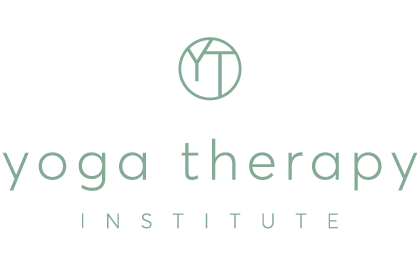The term “viniyoga” has been popularly used to describe the Yoga taught by TKV Desikachar and the Krishnamacharya Yoga Mandiram (KYM) in Chennai, India. TKV Desikachar is the son of Sri Krishnamacharya, who has been one of the most influential yoga teachers in the modern world. Many well-known yoga teachers today have their origins with the teachings of Krishnamacharya. These include BKS Iyengar, Pattabhi Jois, Indira Devi, AG Mohan, and TKV Desikachar, as well as many of their students.
Despite the popular use of the termviniyogato describe the Yoga taught by Desikachar, viniyoga does not really refer to a “style” of yoga at all, and is certainly not used by Desikachar to describe his teachings as a style of yoga. It is a term that has been used by others to attempt to distinguish Desikachar’s teachings from other styles of Yoga.
Viniyoga refers to a general concept that means “proper application based on the situation”1 and it applies in many different contexts. When used in the context of Yoga, it becomes the ‘Viiniyoga of Yoga’ – the proper application of the practices of Yoga based on the needs of the individual and the situation. This concept is described in the Yoga Sutras of Patanjali (YS III:6)2, which are at the heart of the teachings of Desikachar, and his teacher Sri Krishnamacharya3. So, the practices that are taught, and the way that they are taught, will vary according to the individual and the situation. If, for example, we are considering the practice of the physical postures (asana), they are sometimes taught in an intense and vigorous manner, and possibly held for longer periods of time. At other times they might be taught with more gentle and repetitive movements, and held only briefly. There is a popular misconception that the postures are taught by Desikachar and the KYM in a more gentle way. This is not necessarily the case. The repetition of the postures coordinated with the movement of the breath is frequently taught, because it is seen to be appropriate to many beginners who might have injuries, an illness or stiffness in the body, or as a way of focusing the mind. Postures are also generally organised in an appropriate sequence, progressing towards a desired goal. This is referred to as vinyasa krama, and the term viniyoga (from vinyasa) is sometimes used to describe this as the “style” of Yoga taught by Desikachar. However, the way the postures are taught always depends on the needs of the person (or group) in the particular situation. When appropriate, the postures are not taught this way at all. Indeed, sometimes the postures may not be taught at all. Other Yoga practices, such as breathing, meditation, chanting, self-reflection or devotion, may be more appropriate for the needs of the individual or the situation. When understood in this way, it does not make sense to describe viniyoga as a style of Yoga in which the postures are done in a particular way.
In this light, the Yoga taught through Desikachar and the KYM might be more affectionately known as “It Depends” Yoga. If we want to know what practices are taught, and how are they are taught, the answer is usually “It Depends” on the individual (or group) and the situation. This is viniyoga!
Throughout the world today, we see many different so-called “styles” of Yoga. They are mostly styles of Hatha Yoga, and they naturally place particular interpretations on some of the ancient practices, mostly the physical postures (asanas). Within these styles, particular teaching methodologies are generally used, and, very often, the practices taught become standardized, and are “mass marketed”. Whilst this has its benefits, and many people may enjoy a particular style, we need to be aware that this tendency to standardize styles of Yoga may not be in keeping with the spirit of the ancient teachings, where the various practices of Yoga are intended to be applied appropriately to the needs of the individual. “It is not that the individual must conform to the yoga practice (or style), but rather that the yoga practice must be tailored to the needs of the individual” 4.
Indeed, the concept of viniyoga may apply to the many different “styles” of Yoga, not just the Yoga taught by Desikachar and the KYM, so long as the practices are not standardized without consideration of their application to the needs of the individual (or group) and the situation.
- The Viniyoga of YogaTKV Desikachar with Kausthub Desikachar and Frans Moors. KYM Publications, Chennai, 2001, p8.
- The Yoga Sutrasof Patanjali, written about 2000 years ago, is considered to be the most authoritative text on Yoga.
- The Heart of Yogaby TKV Desikachar (1995) is one of most popular books on Yoga today.
- The Viniyoga of YogaTKV Desikachar with Kausthub Desikachar and Frans Moors. KYM Publications, Chennai, 2001, p7.
The Viniyoga of Yoga (2001) by TKV Desikachar with Kausthub Desikachar and Frans Moors is available in Australia from Yoga Sanga P/L.
Michael de Manincor is a Yoga teacher and registered Counselling Psychologist, currently living and teaching in Sydney. He has studied and practiced a variety of approaches to Yoga, including BKS Iyengar, “Ashtanga Yoga” (of Pattabhi Jois), the Transformational Yoga Institute in Western Australia,and is now a student of Kausthub and TKV Desikachar and the Krishnamacharya Yoga Mandiram. He is a lecturer in the Diploma of Health (Yoga) at Nature Care College and is the founding director of Yoga Sanga P/L and the Sydney Yoga Association.
